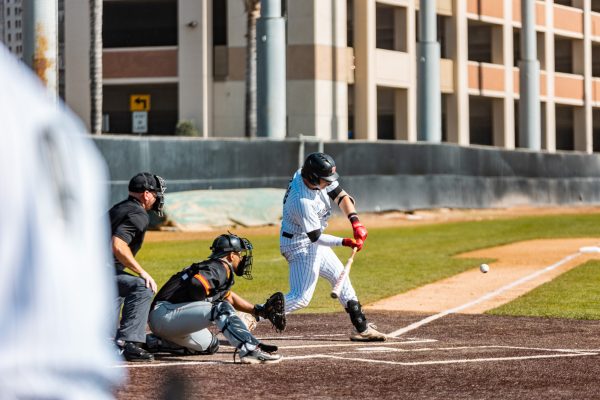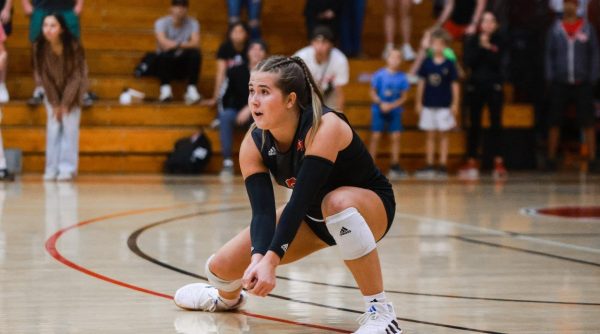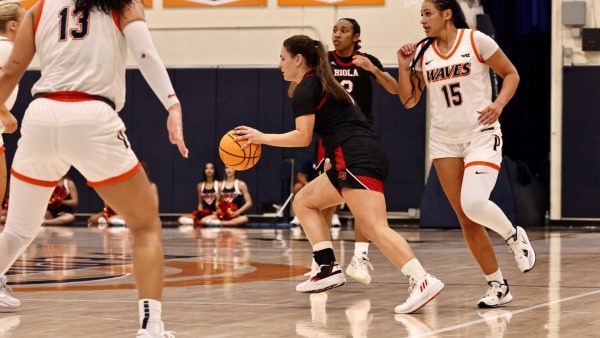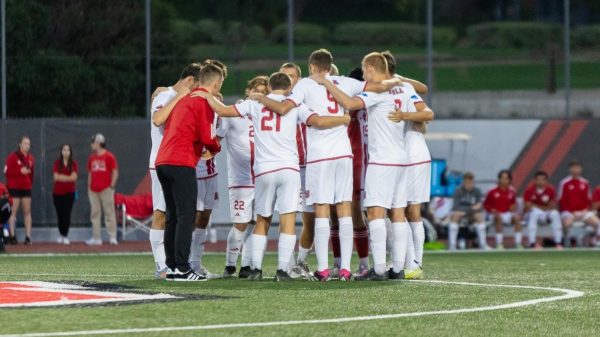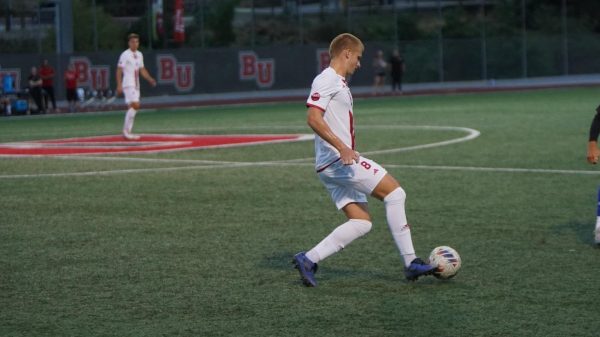NAIA schools consider jump to NCAA Division II
The Golden State Athletic Conference, of which Biola is a part, would be in a pickle if it lost some of its schools.

May 12, 2010
What is the price to remain competitive? Would a top athlete choose to go to a school, knowing he would not be able to participate in the post-season for two years? Would the same athlete choose one school over another simply because of the athletic association they are affiliated with? These are a few of the questions that the 11 Golden State Athletic Conference (GSAC) members will answer on June 1 when applications are due for those wanting to move out of the NAIA and into NCAA Division II.
According to an official press release from the GSAC, all 11 athletic directors of the conference met in August and “agreed to initiate fact-gathering processes particular to each campus and report their findings to the presidents of their respective institutions.”
For teams desiring to make the move, the process begins with each school’s president approving the submission of an application. The school has to pay an application fee and wait for word. The NCAA accepts 10 new teams each year and over 30 teams are thought to have applied at this point. Schools that are accepted then begin a probationary period. In the first year after acceptance, the team is still a member of the GSAC and eligible for NAIA post-season play while they work on the “educational activities” to join the NCAA. For the second year of the process, the team is still a member of the GSAC but not eligible for the NAIA post-season. Following that year, the school is granted a “provisional year” with the NCAA. They are no longer a member of the GSAC or affiliated with the NAIA. If, after that year, the school has proven it is a viable member of the NCAA, they are granted membership and are strongly encouraged to join a conference.
Because of the recent interest in transferring, the NAIA has implemented a rule to give schools a moment of pause. NAIA members who are accepted into the NCAA may only participate in post-season play for the first of the three-year switch.
“That puts a big strain on recruiting,” Biola associate athletic director Ken Crawford said. “Can you tell a kid come to our school, but you won’t be able to make playoffs for two years?”
Another deterrent for NAIA schools is the NCAA’s more strict membership guidelines. The rule book for NAIA members is around 75 pages. The rule book for NCAA schools is 357 pages long. Members are required to have a full time compliance officer on staff. They must also hire an athletic director who is not allowed to be a head coach.
“The financial commitment to go to the NCAA is significant,” said Master’s College athletic director and Biola alum Paul Berry. [The move] really does not aid in the athletic or spiritual experience of the student athlete.”
With all of these requirements, the application fee and the long odds of being accepted, what is the draw of the NCAA? The first, and possibly most obvious, is the brand.
“Many college presidents believe that the NCAA brand is stronger than the NAIA brand,” said Dave Odell, athletic director at Westmont College.
Another advantage to being affiliated with the NCAA is the association covers all expenses of post-season play. They can do this because some of the profit from Division I television contracts and ticket sales trickles down. This is especially enticing for schools that are competitive in multiple sports like Biola. Travel expenses alone can add up quickly with teams traveling sometimes across the country for a shot at a title. Also, some schools with sports unsupported by the GSAC, such as Cal Baptist wrestling and especially APU football, would immediately have more competition and more local opponents with a move to the NCAA.
So how does this affect teams staying in the GSAC? Right now, the conference stands at 11 teams. A conference must have 10 teams to get two automatic bids to an NAIA national tournament. Additionally, each sport needs to have six or more teams to be part of a conference. Softball, for example, only has six teams in the conference as of Point Loma dropping its program. If teams were to leave, the remaining teams would become independents, but some schools may be forced to drop those teams entirely. The other major affect of any departures would be conference schedules.
“If some teams leave, the rest will have to fill those games out of conference,” Crawford said.
That comes with extra cost because the NCAA tries to discourage their teams from playing NAIA opponents. NCAA teams receive points for games they win over the course of the season, but the NCAA awards them no points for beating an NAIA team so that school has nothing to gain. Would the GSAC, who prides itself on being a Christian organization, invite non-religiously affiliated schools into its folds just to fill slots?
“Established in 1986 by like-minded institutions, the GSAC members are all Christian colleges. They are purposely aligned to be similar in enrollment, academics, athletics and student life,” reads the GSAC conference creed.
If the conference dropped below 10 teams, the GSAC would be looking for new members. Some top candidates are William Jessup University in Rocklin, Calif., Menlo College in Silicon Valley, and Assemblies of God affiliate Bethany University in Scotts Valley. Cal State San Marcos might end up in that discussion.
If Biola were to make the move to the NCAA, there doesn’t seem to be a conference right now that would fit. The Great Northwestern Athletic Conference (GNAC) is based in the northwest. The California Collegiate Athletic Conference (CCAA) already has 12 members and one provisional member. And the Pac-West has three members from Hawaii, which would present difficult scheduling and travel situations.
So who is going and who is staying? This is the question on everyone’s mind, and many are not showing their cards before the June 1 application deadline. At this point, none of the 11 conference members have submitted applications. Cal Baptist and Azusa Pacific seem to be locks to go. Westmont, Vanguard, and Hope are likely staying. Some, including Biola, have done the research and the findings are now with the president and board of directors for the final decision but have not come to a final decision. But if teams start leaving, what price is the conference willing to pay to stay competitive? Answers may start to come on June 1.
“I have tried to understand why others are considering leaving,” Odell said. “I generally think they are missing the point on how great we have it here in the GSAC. This is unique. We are a very competitive conference that puts Christ first.”


